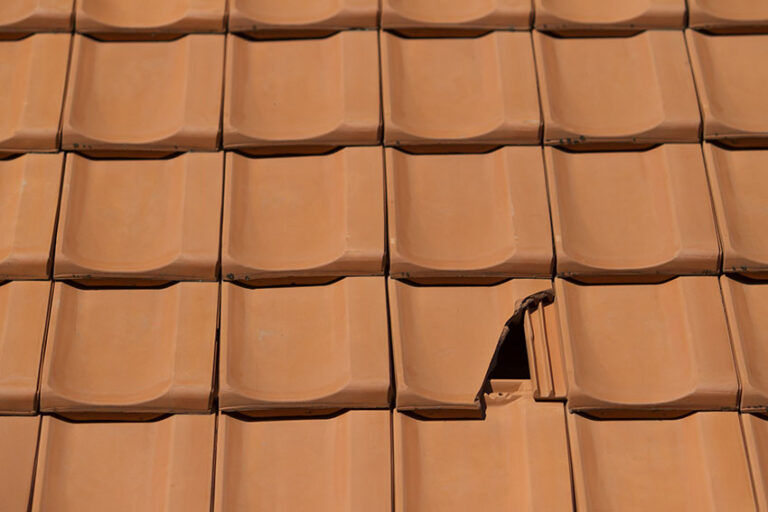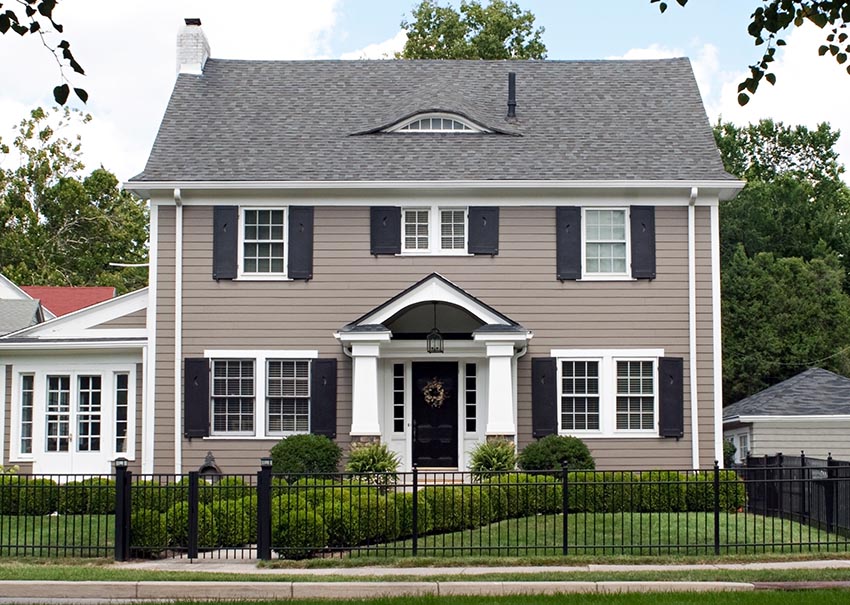Roof Ridge Vent (Pros and Cons & Design Guide)
Here’s our roof ridge vent pros and cons and design guide including what it is, popular types and why your home may need one.
Your home air ventilation system keeps air flowing freely around your home. Proper air circulation prevents the buildup of particles such as dust and mold and ensures that your family can breathe easily. Good air circulation also prevents odors from lingering.
What is a Ridge Vent on a Roof?
A roof ridge vent is a fixed ridge vent that is installed on a roof’s ridge. The point of installing a ridge vent on a roof is to ensure proper air ventilating within the building.
Once a roof ridge vent is installed in place; it’s usually covered with shingles to match the surrounding roof. A good installer will make sure that the area where the vent is placed is practically indistinguishable from the surrounding roof.
Roof Ridge Vent Pros and Cons
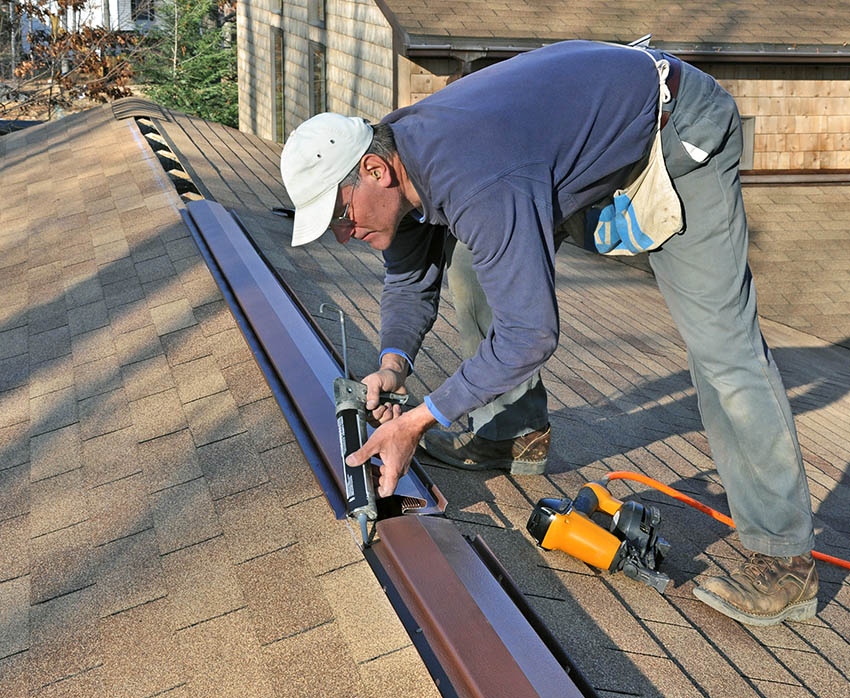
Improve air circulation – The major pros of installing roof ridge vents have to do with air circulation and energy saving. As we mentioned, a ridge vent will improve your home’s air ventilation system.
Temperature control – Proper ventilation will mean that temperatures in your home are easier to control. It will balance temperatures by helping to keep your home cooler in the summer and warmer in the winter.
Prevents moisture – A ridge vent will also prevent the buildup of moisture. This will bring savings in electricity as well as home maintenance costs.
Increased visual appeal and resale value – A stylish roof ridge vent can enhance the design of your homes roof line. In addition it can increase the resale value of your home by saving potential buyers on energy costs.
Helps reduce indoor pollution – A roof ridge vent can help circulate interior air and pull out indoor pollutants. It works naturally by allowing air to move out of the building as wind blows across the vents.
Cons
May cause leaks – One major con about roof ridge vents, however, is that they could lead to leaks. In some cases, wind can cause rain to fall horizontally.
When this happens, the rain could end up falling into the ridge vents and in your home. This is also why it is not recommended that you install these types of vents if you have a flat roof.
Higher cost – The initial cost to install a ridge vent is higher. An added expense will be if soffit vents are needed in addition to ridge vents. Soffit vents allow the intake of air for optimal temperature control.
Not efficient in warmer climates – Roof ridge vents are also not recommended for homes in warmer climates. They are just not as efficient in reducing the flow of hot air.
If you have a short summer season, a ridge vent will reduce the hot air in your home, but if you have long periods of warm weather, well there are more effective ways to improve the warm air circulation of your home.
Roof Ridge Vent Cost
Roof ridge vents alone will cost about $2 to $3 per square foot. The average peaked roof will have a ridge of about 40 to 50 feet, so that will cost about $8-$150.
Additional materials for the installation of roof ridge vents will be around $35-50, while installers will charge about $45-75 per hour. So the entire project will come to about $400-$500.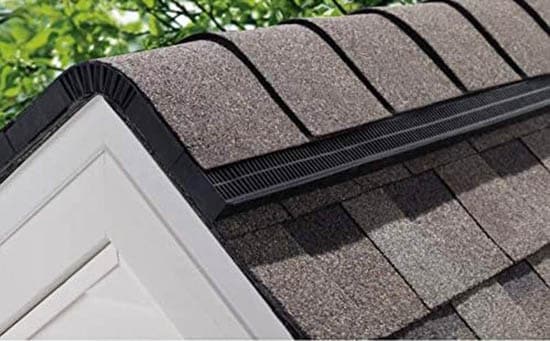
Different Types of Roof Ridge Vents
There are three common types of roof ridge vents out there.
Metal Roof Ridge Vent
These are the most common type of roof ridge vents and, as you can guess from their name, they are made of metal. The vent is usually shaped in one metal piece that is then covered with shingles to match the surrounding roof.
Aluminum is a popular material for a metal roof ridge vent. Aluminum vents are usually slightly mushroom-shaped, with wide flanges on both sides. They are meant to be installed on top of your roof shingles, creating space for air circulation.
Aluminum roof ridge vents can be installed on their own or painted to match the surrounding roof. If you really want to, however, you can also cover them with shingles.
Shingle Roof Ridge Vent
Also known as a shingle-over vent, this ridge vent is covered by asphalt shingle caps that are meant to help it blend into the surrounding roof area.
The advantage of shingle-over vents is that many people find them more attractive than regular roof vents. The shingles serve as a sort of camouflage, keeping the vent from breaking up the line of the roof.
Depending on the manufacturer, you can probably find shingle roof ridge vents in a variety of different roofing materials to match your roof. You can probably also ask for custom-made vents in different colors or shapes, but that will cost you extra.
Off Ridge Roof Vents
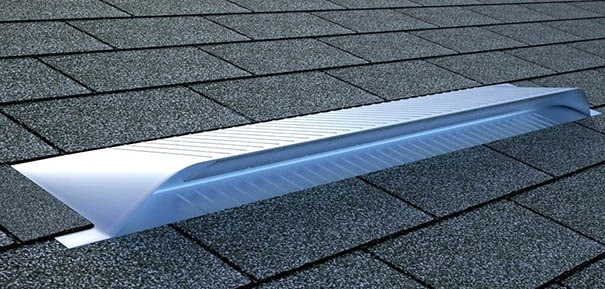
These type of roof vents are designed to be installed close to the crest or ridge of the roof. They usually consist of a metal, raised vent, that is attached to three shingles. To install them, you cut a hole about the size of the vent then mount the entire thing over the hole.
If you have a roof with a small ridgeline, or that doesn’t have a single unbroken ridgeline, then these are a good alternative. Just install a few of these vents along the longest length of your roof.
Ridge Vent vs Roof Vent: What’s The Difference?
If you have been looking into home ventilation, you might have run into the terms “ridge vent” as well as “roof ridge vent”, sometimes in the same article or post. You might also have seen the term “roof vent”.
If you are a little confused about the terminology, don’t be. A “ridge vent” or a “roof ridge vent” is the same thing, a vent installed in the ridge of the roof. A “roof vent” is a general term for vents installed on a roof to improve air circulation.
So, a ridge vent or a roof ridge vent is merely a kind of roof vent. Other examples of roof vents are soffit vents, which are installed under a roof overhang, and gable vents, which are installed near roof gables.
Should The Ridge Vent Go All The Way Across The Roof?
Yes. If you want to maximize the ventilation effect provided by a ridge vent, it needs to go all the way across the ridge or roof of your home.
If your roof doesn’t have an unbroken ridgeline, however, you will need to install a different type of roof vent in strategic portions of the roof that will allow for maximum air circulation.
Some people work with combination roof vents as well. It all depends on the style of your roof and, in this case, the length of your roof ridge.
Does A Roof Need A Ridge Vent?
A roof doesn’t necessarily need a ridge vent, but it will need some sort of roof vent to improve air circulation in your home.
Again, there are several types of roof vents available and, depending on the style of your home some vents of these vents will work better than others.
For example, a roof with a peak or that does end in a ridge is ideal for a ridge vent, while, as we mentioned a flat roof will need another type of vent. See more examples of the types of roofs here.
What Happens If A Roof Is Not Vented?
If you want to know what happens when a roof is not vented, pay a visit to an older home.
Many older homes don’t have vents on their roof, it wasn’t a thing back then. Because of this, older homes are often less energy efficient.
Because an older home doesn’t have a roof vent or a proper ventilation system, it is harder to regulate the internal temperature of said home. Improper ventilation is also responsible for the build-up of particulates in the air, which is why these homes seem dusty.
The major concern for homes without vents, however, is the fact that they are more prone to mold and mildew. Moisture buildup happens faster in an unventilated home, which provides ideal growth conditions for mold and mildew.
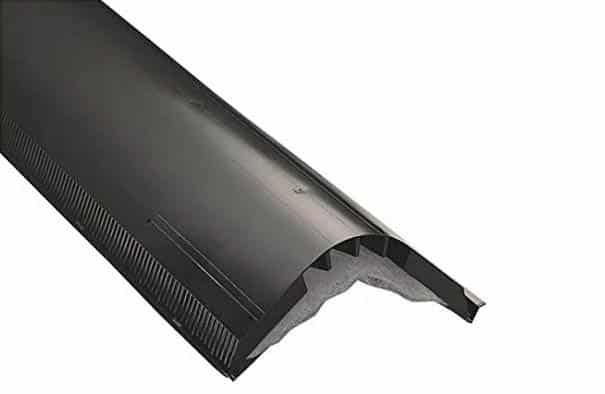
How Do I Know If My Roof Is Properly Vented?
There are three major ways that you can assess if your roof is properly vented.
First, you should see a slight dip in your utility bills as you are now spending less on heating and cooling.
Secondly, you don’t detect any signs of warping or leaking in your roof. These are often signs that moisture is getting trapped, which proper roof venting should prevent.
Thirdly, you should see a decrease in the pest population. Insects and rodents prefer warm and damp environments. A properly vented roof will make your home less “pest-friendly”.
Can ridge vents leak?
Yes. If the weather doesn’t cooperate or if they are badly installed, rain can leak in through a roof vent. This is why it’s important to check the vents and the areas around the vents after a big storm.
You should also look at sealing or weatherproofing the area where your vent is attached to your roof and inspect the vent itself for cracks.
Is A Ridge Vent Best For A Roof?
It all depends on the roof. We’ve mentioned some factors above which make a ridge vent a good fit for certain roofs and a bad fit for certain other roofs.
You need to look at your roof and assess if a ridge vent is indeed the best for your roof or if you should look into the other types of roof vents.
For another related article visit our page about the types of roof shingles.

